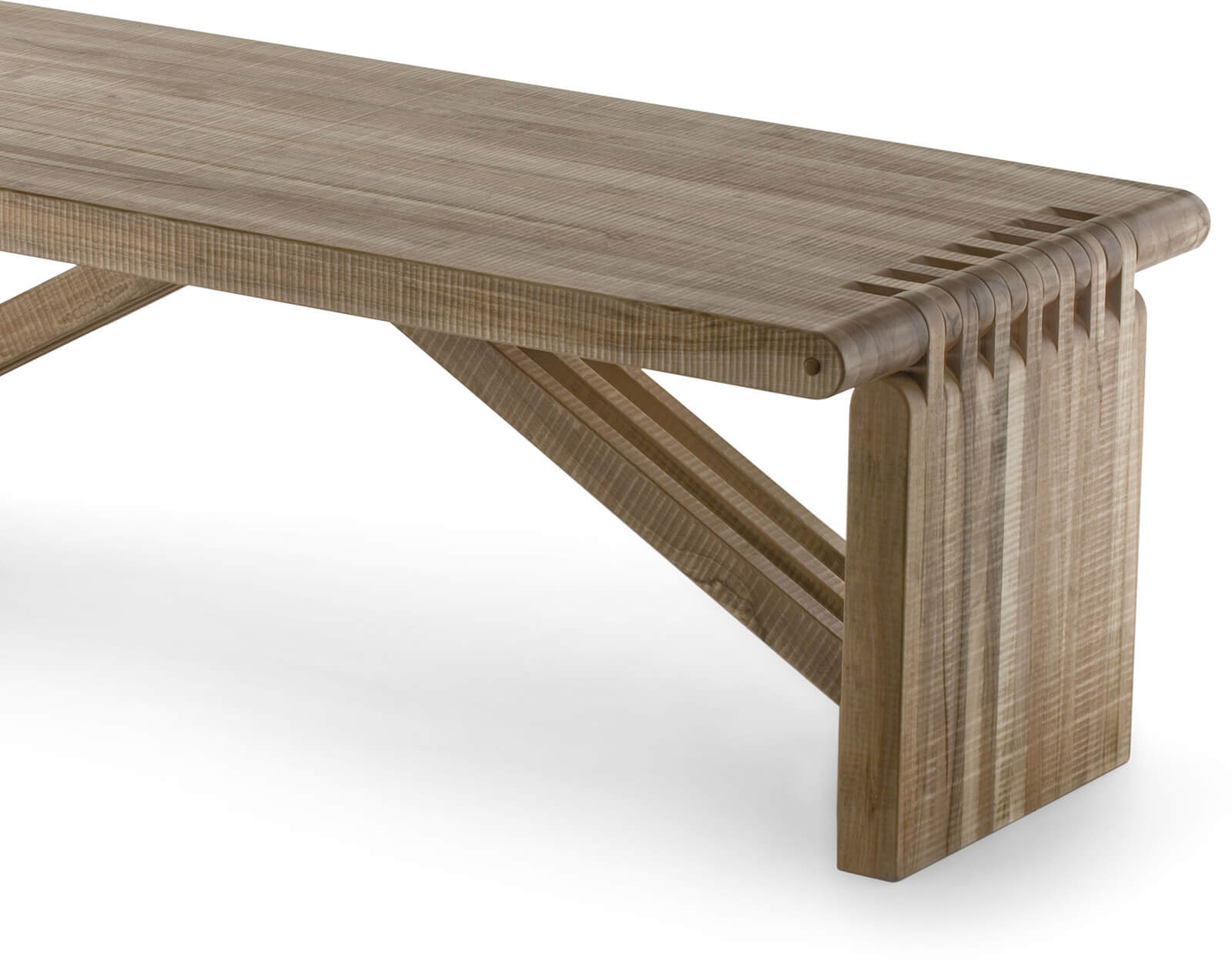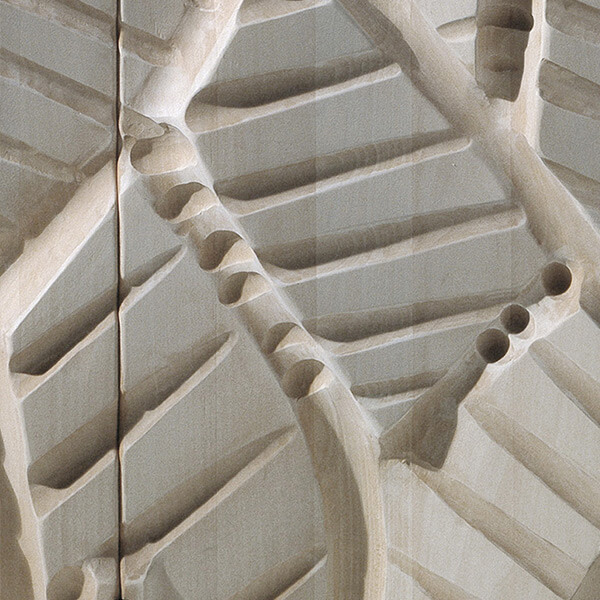
Techniques and Finishes
With our respectful and consistent use of wood as a material we see the possibility of a dialogue with Mother Earth.

The main characteristics of our creations are the formal design of the objects and the specific design linked to our treatment of the material, using single blocks of wood or interlocking structures. In the former the action is that of “taking away” typical of the sculptor (who carves from the full block, finishing with the gouge; in the latter the method of “composition” is used to assemble the wood (or woods), creating interlocking structures.
Each of these exquisite techniques, fine-tuned over the years, is at the disposal of the client for interventions or bespoke items. The surface finishes allow us to shape the surface, giving the piece a specific external appearance and tactile feel. All our finishes are executed on the premises by hand, by our team of professionals.
Here we show you some details of our construction techniques, perfected by Giuseppe Rivadossi and used in our workshop.
Finishes
Tecniques

The block
Vertical grain
Carving from a block is a primordial technique that goes back to Stone Age tools. This near-instinctive technique has developed over the centuries, mainly among sculptors. We fashion our structures and cabinets by assembling the pieces following the direction of the grain, in order to obtain a single block which can be carved to make structures with various functions. From this new technique comes a new appearance and a new, primordial beauty.
Structural details and customised finishes make each piece a unique item.

The Window
The Window technique derives from the interlocking method and addresses a more specific need: to give a structure stability when the wood used is particularly fibrous. The assembling of these small window-shaped elements, joined by a hidden core, gives body to efficient structures with a new image, their small recesses suggesting a safe and inhabited inner space.



Snap-fit or interlocking
The snap-fit technique allows us to go beyond the single piece of wood and build more complex structures. As the assembly method most in tune with the physiology of wood, this technique is used to create structures that are strong yet light. With this technique we showcase the uniqueness of wood.
© 2018 GIUSEPPE RIVADOSSI OFFICINA P.IVA 02246360982 cookie policy - privacy policy design by DEXA












